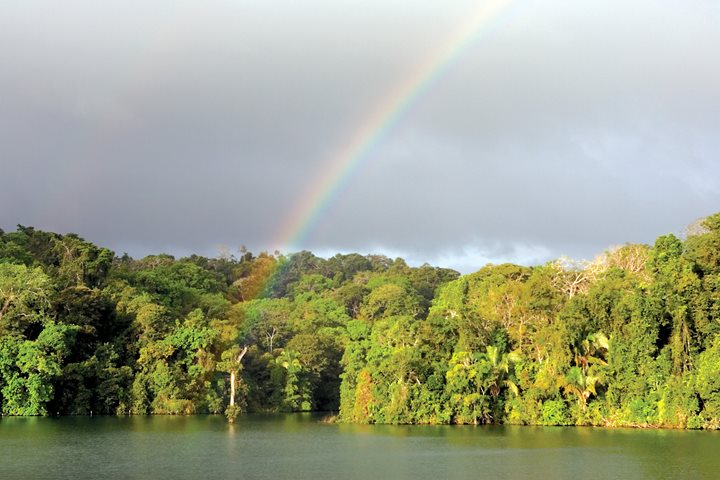Rainforests and vibrant marine ecosystems, cowboys and cattle ranches, volcanoes and petroglyphs: Costa Rica’s Guanacaste region—which encompasses nearly 6,000 square miles along the Pacific Ocean—has them all. July 25 is a national holiday in Costa Rica celebrating the 1824 annexation of Guanacaste, which is one of the country’s seven provinces. After gaining its independence from Spain, Guanacaste had the option to join either Nicaragua or Costa Rica, and the holiday marks a peaceful and democratic union. Here are five things you might not know about this remarkable part of the world. Get Inspired By Photos, Videos, Webinars, Stories, And Exclusive Offers. Sign Up
The Province is Named after Costa Rica’s National Tree
Costa Rica’s national tree is the Guanacaste, a prevalent and welcome sight on the province’s vast plains for the livestock and sabaneros who take shelter under its expansive canopy. Composed of words in the indigenous Nahuatl language meaning “ear” and “tree,” the Guanacaste is also known as the ear pod tree or elephant ear tree due to the curved shape of its pods. Costa Ricans fashion furniture, jewelry, medicine, and soap from the tree and its seeds, and beyond practical uses, the tree is also viewed as representing the country’s strength, stability, and growth.
It’s the Cowboy Country of Central America
Ranches, cattle drives, cowboys, rodeos—the similarities between the horse and cattle cultures of the western United States and Guanacaste are striking. Cowboys in Guanacaste are called sabaneros and their way of life has remained consistent through the generations. The horses they ride are strong and hardy criollos whose lineage can be traced to the Spanish settlers’ Barb and Andalusian breeds. Rodeos, called topes, frequently occur as do horse parades.
You Can Go from Cacti to Rainforest in Hours
Guanacaste’s incredible range of climates and ecosystems supports stunning biodiversity. There are cacti in its rare dry tropical forest, as well as wildlife such as motmots and kinkajous. Orchids and bromeliads add color to humid rainforests, home to parrots and peccaries. Forests carpet the sides of volcanoes, creating habitats for howler monkeys and pumas; and along 400 miles of coastline, sea turtles and manta rays swim in pristine coral reefs.
It Could Have Been Part of the United States
In the 19th century, American Southerner William Walker set his sights on Central America with the intention of turning it into slave colonies. Backed by battalions of Germans, French, and Americans, he was defeated in Guanacaste at the Battle of Santa Rosa in 1856. Then, via a fraudulent election, he became president of Nicaragua where he reinstated slavery. Walker was ousted by a Central American coalition led by a Costa Rican president and later executed in Honduras after trying to take over that country.
There is a Beach Where Jaguars and Sea Turtles Co-Exist
Every year, an average of 37,000 sea turtles nest on one, half-mile beach in Guanacaste near the forest habitat of jaguars. Remote Nancite Beach is within Santa Rosa National Park—our expeditions visit the park but not the beach—where several species of sea turtles include a nesting population of the critically endangered leatherback and a massive breeding population of the vulnerable olive ridley. Naturalists have observed how the jaguars interact with the turtles and found that the percentage of turtles jaguars kill for food is miniscule, showing that two protected species—one that eats the other—can coexist.




